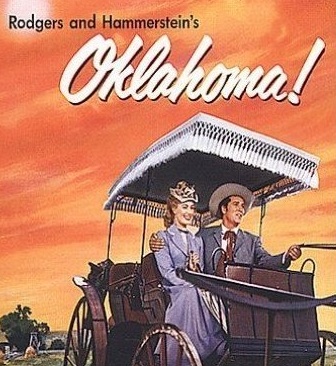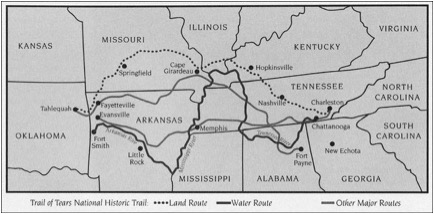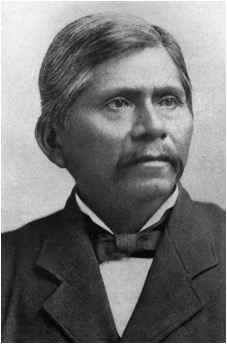OKLAHOMA
Ooooh-OK-lahoma!
Where the wind comes sweeping down the plains!
—Rodgers & Hammerstein, Oklahoma
You’re the reason God made Oklahoma
And I’m sure missin’ you.
—David Frizzell,
You’re the Reason God Made Oklahoma
Sooners
Oklahoma is one of the more uniquely shaped states. When looking at a map, its borders closely resemble a cooking pot or large frying pan. Oklahoma’s unique panhandle shape unnaturally extends its borders west, joining the bordering states of Texas, Arkansas, Missouri, and Kansas with small slivers of Colorado and New Mexico. However amusing Oklahoma may seem, Oklahomans take themselves pretty seriously. Well, at least if you define seriousness in terms of college football.

Like its northern neighbor Nebraska, college football reigns supreme in Oklahoma. The Division 1 Oklahoma University Sooners and Oklahoma State University Cowboys both average over 60,000 fans at each football game. Some professional teams can’t even claim fan support at that level. And with nine other college and university teams competing within the NCAA (two more of those in Division 1), it is no surprise why Sports Illustrated has deemed Oklahoma schools to be among the top institutions for college athletics in the United States.
Officially, Oklahoma is considered a southern state because of its position south of the 36th parallel, but more generally it lies between the Midwest and Southwestern regions. Oklahoman culture is clearly a product of its history and geography. Due largely to the migration of many native tribes from east of theMississippi River, a migration forcibly instituted by the federal government of the 1820s and 1830s, Native American ancestry runs deep in Oklahoma. Sixty-seven tribes are represented in the state, and over twenty-five different native languages are spoken to this day. The state mammal is the American bison, and pow wows and other cultural events are frequently held throughout most Oklahoma cities and counties.
During the cattle-drive years of the 1860s and 70s Oklahoma was in the middle of the action. Massive herds of cattle were driven along cattle trails from Texas to Kansas, crossing what was then still largely referred to rather unceremoniously as “Indian Country,” even though the name for the territory, Oklahoma, had been adopted in 1866. Conflict arose between the cowboys and ranchers who drove the herds, and white farmers who had migrated to Oklahoma with the promise of free land. Land was allocated on a “first-come first-served” basis, and many settlers refused to wait until they were officially granted access to claim their homesteads, crossing the territory lines sooner than their law-abiding counterparts. “Sooners” became the nickname for these new Oklahomans, eventually becoming the official nickname for residents of the state.
While conflict with the Indians was rare during this period, the resentment between the farmers and ranchers often reached a fevered pitch. And while this territorial feud was certainly nothing to sing about, it did give us the legendary musical stage play, “Oklahoma,” the first of many collaboration efforts by the incomparable duo, Richard Rodgers and Oscar Hammerstein.

Removal Treaties
The “Indian Removal Treaties” of the early 1800s were about as indelicate as the name implies. They were documents by which the United States claimed the authority to move the "Five Civilized Tribes" (Cherokee, Choctaw, Chickasaw, Creek, and Seminole) out of their homeland in the southeastern U.S. and into a region west of the Mississippi which had recently been acquired in the Louisiana Purchase. These treaties were often the cause of severe factionalism within the individual tribes, because in virtually every case at least some of the members were understandably loathe to leave the land of their ancestors, land that their people had inhabited for generations and that was considered sacred, while others were anxious to peacefully escape the encroaching white settlers.

To make matters worse, while the treaties may have been entered into in good faith on the part of the Americans (though clearly this was not always the case), the execution of the terms resulted in tragic suffering. Volumes have been written about the “Trail of Tears,” the path—actually there were several routes—taken from Indians’ homelands north through Tennessee into Arkansas, and later Oklahoma. Terrible winters were endured, and sickness took many lives. The dead were buried along the trail and given a short funeral ceremony, after which the torturous journey continued.
Those who refused to travel the Trail of Tears suffered as well. The Seminole tribe chose to fight the Americans rather than be forced from their home. The ensuing Seminole Wars were ugly and inglorious, and all but destroyed the tribe. Many of those who survived the war were eventually transported, some in manacles, a few hundred at a time, to the west.
The Cherokees, the first to sign a removal treaty, were initially removed to a region in northwestern Arkansas, but white settlers were already pouring into that area. Almost immediately after arriving, the Indians began to experience the same difficulties that had driven them from their homelands. Before the problem could fester, the government appropriated what is now the entire state of Oklahoma minus the panhandle as “Indian Country,” and took responsibility for keeping white settlers out of the region. After the Cherokees, over about two decades in the 1820s and 1830s, the remaining tribes from Georgia, Florida, Mississippi and Alabama crossed the Trail of Tears into Indian Country.
This rather ignominious period in U.S. history finds its relevance to the naming of the state of Oklahoma, largely because of the Treaty of Dancing Rabbit Creek. That was the removal treaty in which the Choctaw tribe agreed to relinquish their lands in Mississippi in exchange for land west of the Mississippi River. In the treaty, the Choctaw refer to themselves several times as the “Choctaw Nation of Red People,” or, in their own language, “Oklahoma”.
Indian Country and the Civil War
The Civil War brought about more factionalism among and between the tribes of the Indian Territory. The Choctaw and Chickasaws formed alliances with the South early on, but the remaining tribes were sharply divided. Eventually all five tribes plus some smaller tribes now residing in the region signed treaties with the Confederacy, which promised them more autonomy than the current U.S. government.
Though Indians fought on both sides of the Civil War, when it ended the tribes were forced to answer for their written alliances with the South. By siding with the Confederacy they had forfeited (in the U.S. view) any treaty that existed with the United States, and at the Council of Fort Smith in 1865 the U.S. made known to the Indians the terms of peace which would be imposed upon them.
Allen Wright
In the Spring of 1866 the Five Civilized Tribes sent delegations to Washington to sign formal treaties with the United States based upon agreements made at Fort Smith. Representing the Choctaw was, among others, Reverend Allen Wright, a full blood Choctaw who had traveled the Trail of Tears. His mother had died on that journey, and his father died shortly after arriving in Indian Territory. Allen Wright, whose Choctaw name was Killihote , was raised by Reverend Cyrus Kingsbury, a Presbyterian missionary, and later went on to distinguish himself as a statesman within the Choctaw tribe.1

One of the terms of the Fort Smith agreement had been that the Indian nations would attempt to consolidate themselves, and so at the 1866 negotiations the question arose “What would you call your territory?” Allen Wright, the scholar of the Choctaw delegation, immediately responded “Oklahoma.”

The word “Okla” means people in Choctaw, and the word “homma” or “humma” means red . Therefore, the name must have seemed naturally fitting to Allen Wright who had no doubt studied the Treaty of Dancing Rabbit Creek, and who was accustomed to referring to his people as the “Choctaw Nation of Red People.”
While there were some grumblings among the other delegations they had more to do with the fact that Wright had given his answer so decidedly and so quickly, without consulting with the tribes or even with the other delegates. But while there was some general disgruntlement, no one was prepared to offer an alternative name for the new territory, and so “Oklahoma” stuck.
Four treaties were signed in 1866: one with the Choctaws and Chickasaws, and one each with the other three tribes. The first occurrence of the word “Oklahoma” in any U.S. Document appears in the Chickasaw-Choctaw treaty of 1866 in a section providing that, in the event that the tribes are consolidated under one government, the Superintendent of Indian Affairs should be the chief executive, and should have the title “Governor of Oklahoma.”2
Twin Territories
The Indians, however, were to be squeezed once more, even within the confines of what was intended to be Indian Territory. As more and more settlers moved west and ranchers began to covet the grazing lands of Oklahoma, the Federal government opened the unassigned lands to non-Indian settlement. The panhandle region was added in 1890, and even more white settlers moved into the new territory, primarily in the western half.
As the division between the Indian reservations of the east and the white settlers of the west became sharper, they began to be referred to in a rather ironic manner. “Indian Territory” or “Indian Country” was the region in the east with the large Native American population and the majority of the reservations. Oddly, the root of the word that described them, “Indian,” was the name created by Europeans on the false assumption that the Caribbean Islands were the Indies of the Orient (see Indiana). On the other hand, the name used to label the western lands, those populated mostly by whites, was “Oklahoma,” the name the Choctaw used to refer to themselves.
The term “Twin Territories” was codified with the publication of a magazine called Twin Territories: The Indian Magazine. It described itself as “the only publication of its class in the Indian Territory, and named in honor of both the Indian Territory and Oklahoma.”3
During the 1890s and early 1900s the efforts to gain statehood for either or both of the Twin Territories gained strength, and out of those efforts were developed four possible strategies:
1. Joint or single statehood for one state made up of both territories,
2. Two separate states, statehood for each territory,
3. Piecemeal absorption, meaning that Oklahoma would become a state, and Indian Country would be absorbed little by little as agreements were made with each tribe, and
4. The granting of statehood to the white settlers in “Oklahoma,” and leaving the Indian Country to pursue its own destiny.4
In 1905, in a bid for the second of these options, the Five Civilized Tribes of the Indian Territory developed a Constitution and presented it to the U.S. Congress along with a request for statehood. This time they would call their state “Sequoyah.” The effort failed, however, and it became clear that there was a vast preference in the U.S. Congress for the single-state plan.
Indeed, the following year Congress passed the Oklahoma Enabling Act, providing for the combination of the Twin Territories into one state of “Oklahoma.” On November 16, 1907, our 46th state entered the union with the signature of President Theodore Roosevelt.
End Notes
1. Dale, Edward Everett, History of Oklahoma , (New York, 1948), p. 185.
2. Thoburn, Joseph B., A Standard History of Oklahoma , (Chicago, 1916), p. 382.
3.Pennington, William D., “Twin Territories,” Encyclopedia of Oklahoma History & Culture , (Oklahoma Historical Society), http://digital.library.okstate.edu/encyclopedia/entries/T/TW003.html, accessed 08/20/09.
4.Gibson, Arrell Morgan, Oklahoma, A History of Five Centuries , (Norman: University of Oklahoma Press, 1981), p. 192.